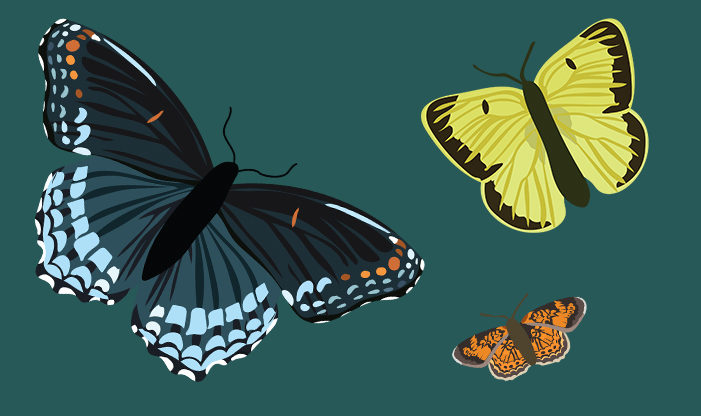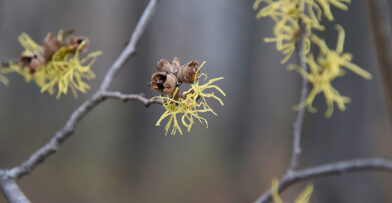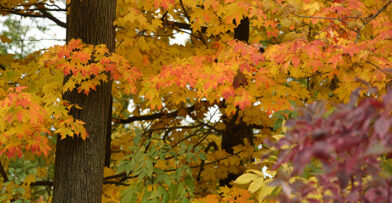Summers shimmer with brightly colored butterflies, which are insects in the order Lepidoptera. The words Lepido means scale, and Ptera, wing, conveying that butterfly wings are composed of tiny scales spread over their entire surface. Many people are familiar with the monarch butterfly, but the world is filled with other beautiful butterfly species that are worth knowing.
There are six families of butterflies, which share the order Lepidoptera with moths, but differ from moths in key ways. Butterflies have clubbed antenna, and hold their wings erect when at rest. They are also diurnal, or active during the day, whereas moths are active at night. There are around 28,000 species of butterflies worldwide, with 750 in the U.S. and about 130 species living in Wisconsin.
Importance Beyond Beauty
Butterflies are an important class of insects. They are pollinators, attracted to bright flowers and feeding on nectar. Butterflies carry pollen on their bodies when they fly from plant to plant, which is necessary for food production, helping the plants to produce fruits and seeds. Many species of pollinators are in decline.
Butterflies are sensitive to their environment, so scientists can use data about them to monitor habitat and climate change. They are an essential part of the food chain, serving as food for birds, spiders, reptiles, and bats.
Magnificent Lifecycle of the Butterfly
The lifecycle of a butterfly seems magical. Females lay their eggs, either singly or in clusters, on a host plant. The specific species of plant is important because it will become food for larvae, which will only feed on one plant species or group of related plants. The caterpillar, which is the larval stage of a butterfly, spends this phase as a small instar. The caterpillar’s skin grows continuously and morphs into multiple instars as they molt and grow larger.
Before the final molt, the caterpillar grows wings beneath its skin. Then, they form a chrysalis and begin the incredible task of metamorphosis, entering their pupal phase. During metamorphosis, the entire body of the caterpillar dissolves and rearranges with new parts. The caterpillar then emerges as an adult butterfly with limp, wet wings, and is very vulnerable. The newly emerged butterflies flood their wings’ veins with body fluids, inflating them, and then pump the wings to practice flying. They can live as adults for about two weeks, but this varies by species.
Butterflies often produce two or more generations of their species during a season, one in early summer and another in late summer. Some butterflies overwinter as a chrysalis, larva, or pupa, and then emerge the next season. If a butterfly emerges as an adult closer to the cold season, it will migrate rather than remain in a wintery habitat. Besides the monarch, research is currently being done on other butterfly species’ migration patterns. They are thought to act as partial migrants like some birds.
Dietary Habits of Butterflies
Eating for an adult butterfly is made possible by a long tongue, which forms during the pupal stage of metamorphosis. In this process, the pupa loses its hard mandibles to form a tube-like structure called a proboscis. The proboscis is made of two tubes connected with fibers in between that come apart and rejoin. They are tightly coiled when the insect is not feeding, controlled by muscular contraction and a hydraulic mechanism.
When the butterfly eats, muscular contraction puts pressure on the proboscis tube, and it retracts and unfurls. The length of this tube determines which flowers it forages on – a longer proboscis will allow the butterfly to feed on deeply petaled, tubular flowers, a marvelous example of co-evolution. Butterflies have taste sensors on their feet, which help them select the correct host plant for their eggs.
Butterflies usually have more than one type of food source. Besides nectar and juice from fruits, they will eat sap, carrion, tears and sweat, wet soil, and from puddles – places where they can obtain needed minerals, salts, and amino acids. Some species are in decline due to habitat loss and the loss of host plants. This is concerning because butterflies have such specialized host plants, their one food source as caterpillars.
Local Butterfly Species
Of the 130 or so species found in Wisconsin, some are readily seen at the Center. Each type has distinctive habitats, lifecycles, host plants, and food sources. A few are highlighted here.
Clouded Sulfer
The delicate-looking clouded sulfur has powdery yellow wings edged by brown and small wing spots. Females, which are white in color, lay their eggs singly on plants in the pea family in habitats that include prairies, roadsides, native grasses, and hay. When the eggs hatch, the larvae will often eat one another if they are laid on the same plant. The clouded sulfur ranges throughout North America and is migratory.
As adults, they take advantage of a variety of plants for food such as milkweed, butterfly bush, and white clover. You will see this species most often in June through August. Interestingly, they are very attracted to red flowers, as well as red colors, which draws them to a car’s taillights.
Eastern Tiger Swallowtail
Larger and more robust-looking, the eastern tiger swallowtail has tiger-like brown stripes and edging on yellow-orange wings. Their habitat includes deciduous forests, fields, and parks where they eat and pollinate sunflowers, honeysuckle, and milkweeds, among others. They lay their large green eggs on host trees such as cottonwood, ash, birch, and species in the magnolia and rose families. The eastern tiger swallowtail is a caterpillar for three to four weeks, and they pupate for 10-20 days, which is how they can overwinter. This species produces two broods per season, with the adult living only two weeks. Their first instars resemble bird droppings, which can save them from predation.
Red-Spotted Purple
The gorgeous, red-spotted purple has bluish-purple, iridescent wings with orange spots and light markings on the edges. Their habitat includes forest edges, trails, and roadsides, where they find host trees. Females lay their eggs singly on trees including willow, poplar, and aspen. There are two broods per year, one in early summer, and the second brood overwintering as a larva. The caterpillars, which also look like bird droppings, hatch in early summer, but they don’t enter the adult phase until much later. Adults, which you will see in mid-late summer, consume an interesting diet of tree sap, rotting fruit, animal dung, carrion, as well as purple cone flowers, also getting nutrition from puddles. They are not big pollinators.
Painted Lady
The painted ladies’ complex orange and brown wings with white markings make them visually pop. They live in prairies, meadows, and overgrown fields, having over 100 species of host plants, which include thistles, asters, and borage. They lay a single, pale green egg the size of a pinhead on a leaf. Painted ladies eat tall prairie plants, including New England aster, joe-pye weed, purple coneflowers, and sunflowers. Adults, which migrate to the southern U.S. to overwinter, are seen in June and through the fall, living for two weeks. They are the most widely distributed butterfly in the world, living on every continent except Australia and Antarctica.
Pearl Crescent
The pearl crescent has complex orange, reddish, and brown designs on their wings, but is much smaller than most butterflies. Living mainly in woodland edges and grasslands, their host plants include all species of asters, especially New England asters, where they are expert hiders. This species lays their eggs in clusters on the underside of leaves, often several layers deep, overwinter as caterpillars, and can produce up to five generations annually. Their long proboscis makes many species of wildflowers a preferred food source, including zinnias and marigolds.
Preserving Butterfly Species
Maintaining habitat and host plants for butterflies is particularly important, as many habitats are being lost. The federally endangered karner blue relies on lupine, which grows in oak savanna and pine barren habitats in Wisconsin. Both habitats are in decline. The swamp metalmark is a nearly extinct state endangered species. The caterpillar only eats a single species of uncommon thistle, while the adults nectar on just a few wildflower types.
One way to help butterflies is to provide habitat by planting native plants in your yard. It also helps if you avoid applying herbicides and pesticides. Another thing you can do is to provide shelter and drinking stations. Enjoy the beauty of butterflies in flight by bringing them to your yard and ensure that this dazzling family of insects is preserved.
With contributions from Aubrey Ellickson Fulsaas, Emily Leonard, and Drew Shuster


